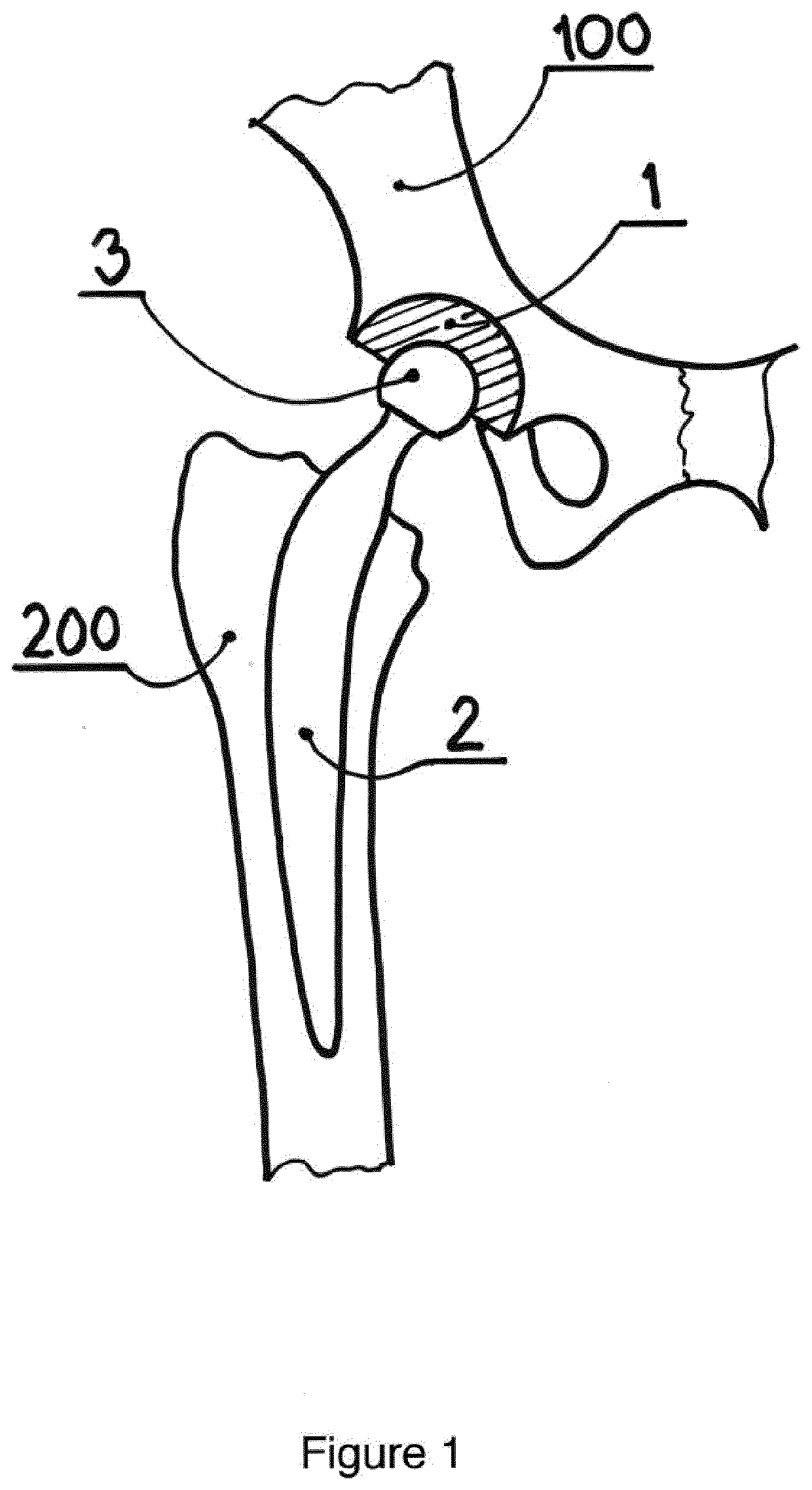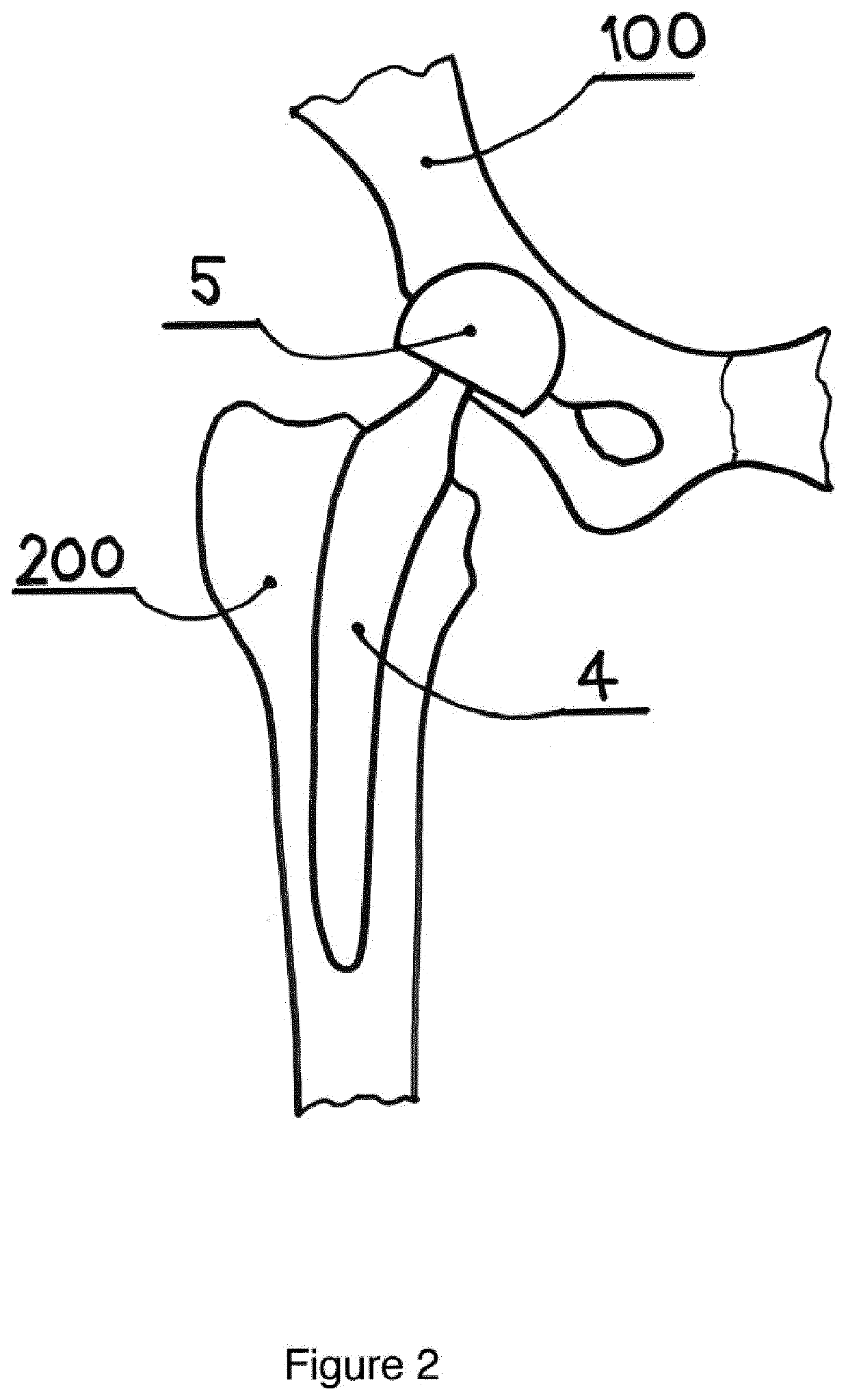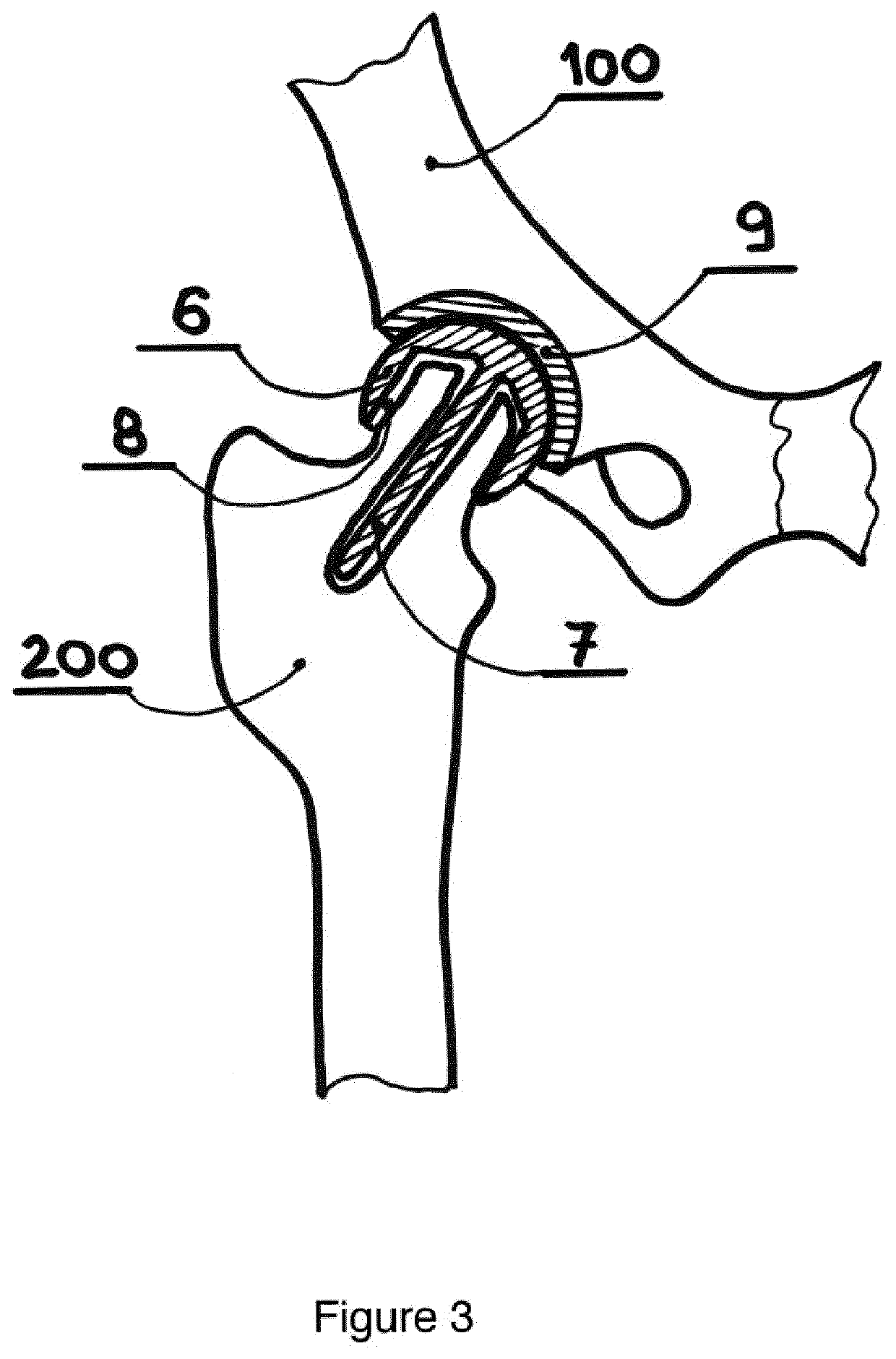Resurfacing cup for acetabulum hemiarthroplasty of the hip joint
- Summary
- Abstract
- Description
- Claims
- Application Information
AI Technical Summary
Benefits of technology
Problems solved by technology
Method used
Image
Examples
Embodiment Construction
[0035]A state of the art total hip replacement prosthesis, FIG. 1, comprises an acetabulum cup 1 fixed to the pelvis 100, a femoral stem 2 fixed to the femur 200 with the femoral head 3 attached to the stem 2. A typical configuration today has a polymeric cup inlay, most commonly from a cross-linked UHMWPE, backed by a metal shell with a porous coating facing the bone. The stem for cementless fixation may be coated with a porous layer too, or alternatively rough-blasted with a thin coating of, for example, hydroxyapatite. The head can be metallic or ceramic. In an alternative to cementless fixation, both the cup and the stem can be cemented into respective bones using so-called bone cement, a two-component poly-methyl-methacrylate.
[0036]A state of the art hemi hip replacement prosthesis, FIG. 2, comprises only a femoral component. A femoral stem 4 is fixed to the femur 200. A large diameter femoral head 5 is fitted to the stem 4 either directly, or via a smaller head to form a bi-po...
PUM
 Login to View More
Login to View More Abstract
Description
Claims
Application Information
 Login to View More
Login to View More - R&D
- Intellectual Property
- Life Sciences
- Materials
- Tech Scout
- Unparalleled Data Quality
- Higher Quality Content
- 60% Fewer Hallucinations
Browse by: Latest US Patents, China's latest patents, Technical Efficacy Thesaurus, Application Domain, Technology Topic, Popular Technical Reports.
© 2025 PatSnap. All rights reserved.Legal|Privacy policy|Modern Slavery Act Transparency Statement|Sitemap|About US| Contact US: help@patsnap.com



